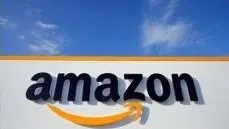Amazon.com Inc. has delivered a slow quarter and outlook.
Shares fell 12 per cent on Thursday in after-hours on the back of higher costs to run the company’s warehouses and deliver packages to customers.
After a surge during the Covid-19 pandemic, the e-commerce giant saw expenses swelling as it offered higher pay to attract workers.
A fulfillment centre in New York City voted to create Amazon’s first US union, a result Amazon is contesting.
Steeper fuel prices ate into consumers’ disposable income, besides making delivery more expensive.
Amazon forecast weaker-than-expected sales for the second quarter.
Results from core online retailing business and the advertising unit were short of Wall Street estimates.
Amazon Web Services had a strong quarter.
Amazon sales of $116.4 billion, were up 7 per cent from a year ago. This was towards the top end of its guidance range of $112 billion to $117 billion, and a hair below the Wall Street consensus of $116.5 billion.
Operating income was $3.7 billion, towards the lower end of the target range of $3 to $6 billion.
The company lost $3.8 billion, or $7.56 a share, largely due to a $7.6 billion non-operating loss on its stake in the truck maker Rivion.
Amazon said unfavorable currency exchange rates hurt sales by $1.8 billion, noting that sales otherwise would have increased 9 per cent.
Sales at online stores fell 3 per cent year-over-year to $51.1 billion, shy of the Wall Street consensus of $51.9 billion.
Amazon Web Services revenue was $18.4 billion, up 37 per cent, slightly above estimates.
Ad revenue was $7.9 billion, up 23 per cent, but short of analyst estimates for $8.2 billion, and down from $9.7 billion in the fourth quarter.
“The pandemic and subsequent war in Ukraine have brought unusual growth and challenges,” Amazon CEO Andy Jassy said.
“Today, as we’re no longer chasing physical or staffing capacity, our teams are squarely focused on improving productivity and cost efficiencies throughout our fulfillment network,” Jassy added.
“We know how to do this and have done it before. This may take some time, particularly as we work through ongoing inflationary and supply chain pressures, but we see encouraging progress on a number of customer experience dimensions, including delivery speed performance as we’re now approaching levels not seen since the months immediately preceding the pandemic in early 2020.”






















